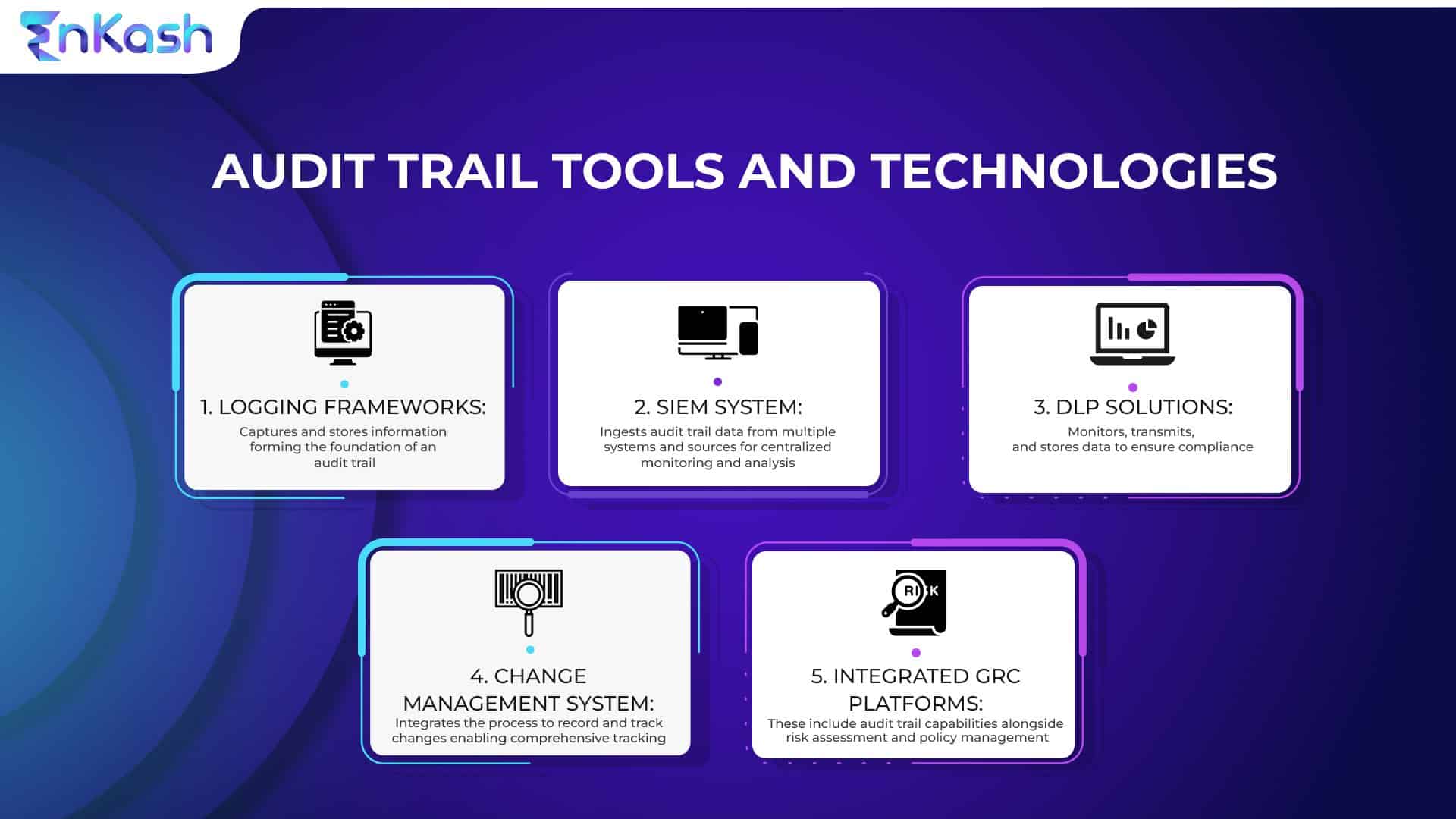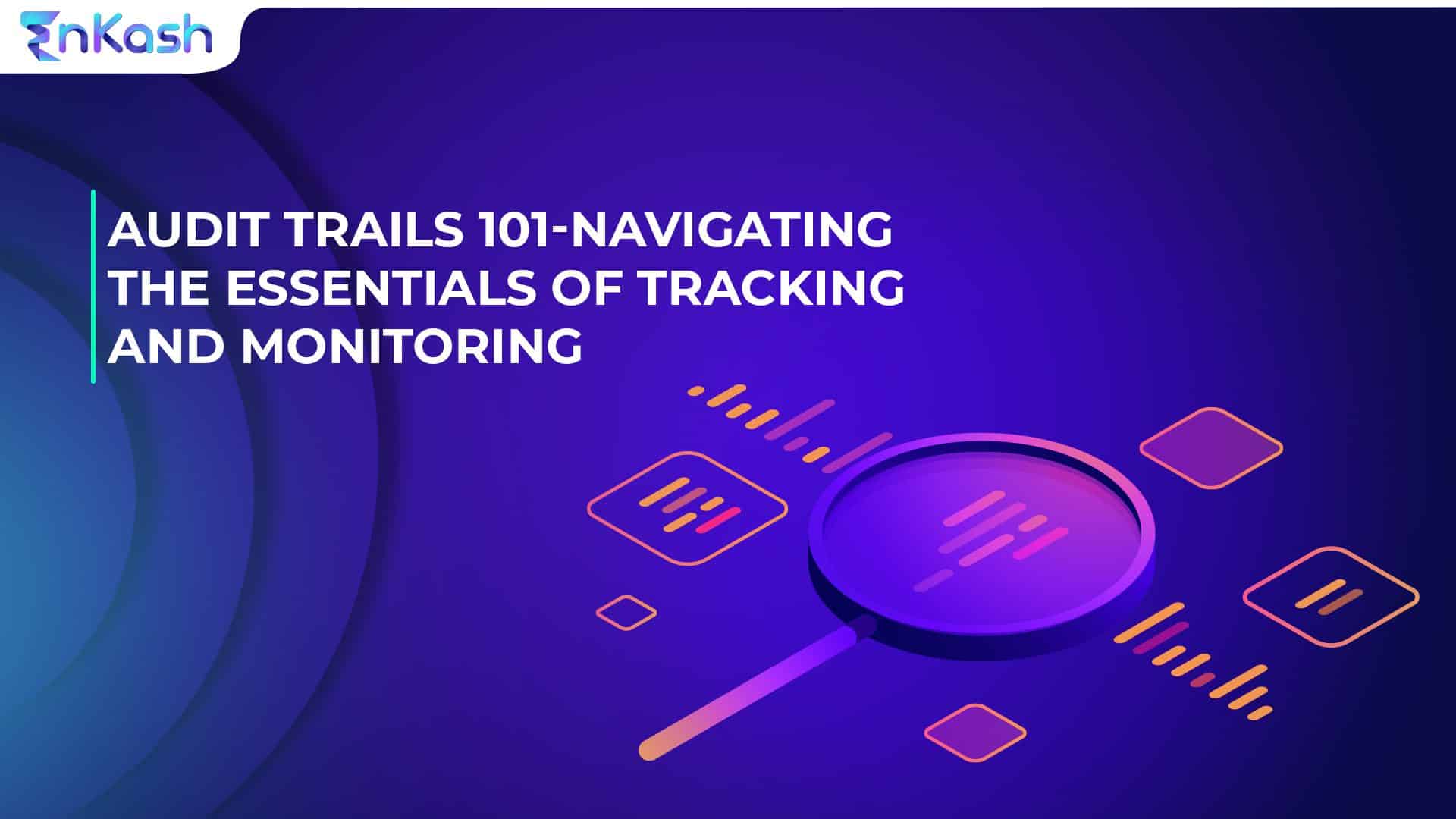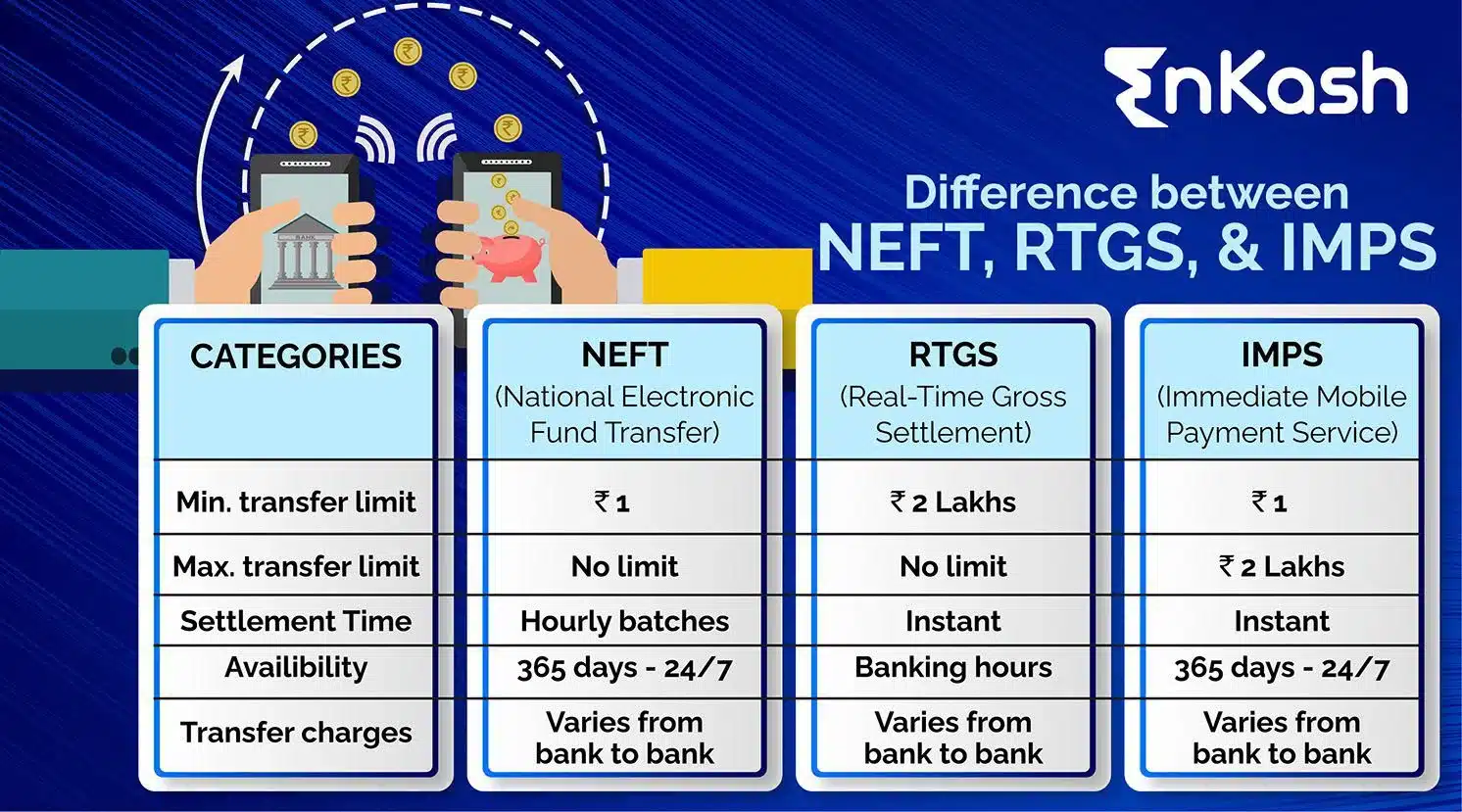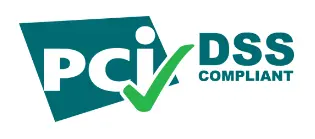Data security and regulatory compliance have become important for organizations across various industries. To ensure accountability and transparency, businesses must implement robust tracking and monitoring mechanisms. Reading further, let’s delve into audit trails’ essentials, key elements, applications, and best practices for effective audit trail management.
What is an audit trail?
An audit trail is a chronological record that documents every event or action within a system or process. It serves as a comprehensive log of activities, capturing details such as who acted, what action was taken, when it occurred, and where it happened. The purpose of various types of audit trails is to provide a trail of evidence that can be used for various purposes, including forensic investigations, compliance audits, and identifying potential security breaches.
Key elements of types of audit trails
An audit trail typically comprises the following key elements:
- Event identification: Each event in the audit trail should have a unique identifier to facilitate easy tracking and referencing
- Timestamps: Accurate timestamps are crucial for establishing the sequence of events and determining their timing
- User identification: It is important to record the identity of the user or entity responsible for each action within the system. This allows for individual accountability and the ability to trace any unauthorized activity
- Action details: The audit trail should capture comprehensive information about the action performed, including specific details such as the type of action, parameters used, and any relevant data involved
Application of audit trail in different domains
- Regulatory compliance: Many industries are subject to stringent regulatory requirements that mandate the maintenance of comprehensive audit trails. These trials help demonstrate compliance with specific regulations and provide evidence for audits
- Data security: Audit trails are vital in detecting and mitigating security breaches. By monitoring and recording user activities, organizations can identify suspicious behavior, unauthorized access attempts, or any potential data leaks
- Forensic investigations: In the event of an incident or suspected breach, an audit trail is a valuable source of evidence for forensic investigators. It helps reconstruct the sequence of events leading to the incident and aids in identifying the responsible parties
Implementing effective audit trails
To ensure the effectiveness of an audit trail, organizations should consider the following best practices:
- Define clear objectives: Establish the goals and purposes of the audit trail, aligning them with the organization’s specific needs and compliance requirements
- Capture relevant events: Identify and log events critical to the system’s integrity, security, and compliance. This includes actions such as user logins, data modifications, system configuration changes, and access control updates
- Maintain data integrity: Implement measures to protect the audit trail from unauthorized modification or deletion. Employ technologies such as encryption and access controls to ensure the integrity and confidentiality of the recorded data
- Retention and storage: Establish appropriate retention periods for audit trail data based on regulatory requirements and the organization’s internal policies. Choose secure storage solutions that can handle the volume of data generated and maintain its accessibility over time
Best practices for audit trail management
To effectively manage audit trails, organizations should follow these best practices:
- Regular monitoring: Proactively monitor the audit trail for anomalies or suspicious activities. Implement real-time alerts to detect and respond to potential security incidents promptly
- Regular auditing: Conduct periodic audits of the audit trail to ensure accuracy, completeness, and compliance with regulatory standards. Regularly review and refine the audit trail policies and procedures to align with evolving requirements
- Staff training: Provide comprehensive training to employees regarding the importance of audit trails, their responsibilities in maintaining them, and the significance of following established protocols
- Automation and integration: Leverage automation tools and integrate audit trail functionality within existing systems to streamline data collection, reduce manual errors, and enhance efficiency.
Conclusion
Audit trails are known to play an important part in maintaining and ensuring transparency and compliance. It is also known to safeguard sensitive data in an increasingly complex and regulated business environment. Organizations can establish a solid foundation for tracking and monitoring activities by implementing effective audit trail management practices. This enables them to mitigate risks, detect security breaches, and demonstrate accountability.
With the right tools and processes, businesses can navigate the essentials of audit trails and strengthen their overall security posture. The team of professionals at EnKash ensures a smooth audit trail software for you and your business. This efficient spend management platform ensures you can easily work with your expenses.

FAQs
What is an audit trail, and what does it document?
An audit trail is a chronological record that documents every event or action within a system or process. It captures details such as who acted, what action was taken, when it occurred, and where it happened, serving as a comprehensive log of activities.
What are the key elements of an audit trail?
An audit trail typically comprises event identification with unique identifiers, accurate timestamps, user identification for individual accountability, and comprehensive action details, including action type and relevant data.
How is an audit trail applied in different domains?
Audit trails have various applications, including regulatory compliance to demonstrate adherence to regulations, data security to detect and mitigate breaches, and forensic investigations to reconstruct events during incidents.
What are the best practices for implementing effective audit trails?
Best practices for implementing effective audit trails include defining clear objectives, capturing relevant events critical to integrity and security, maintaining data integrity through encryption and access controls, and establishing appropriate retention and storage solutions.
How can organizations effectively manage audit trails?
To effectively manage audit trails, organizations should regularly monitor for anomalies, conduct periodic audits for accuracy and compliance, provide staff training on their importance, and leverage automation and integration for efficiency.
How do spend management tools like EnKash support efficient audit trail management?
Spend management tools like EnKash provides efficient audit trail software, helping businesses navigate the essentials of tracking and monitoring expenses, ensuring transparency, compliance, and security in a complex business environment.














